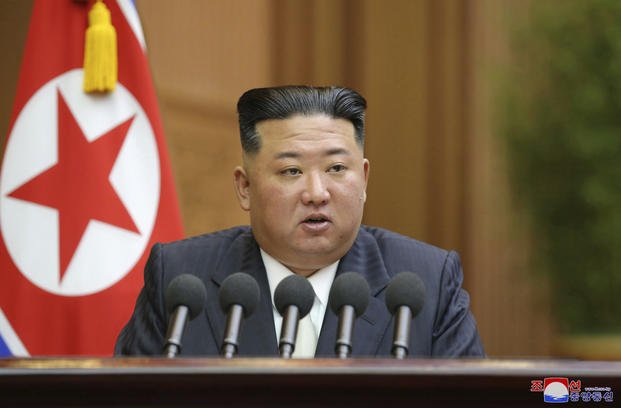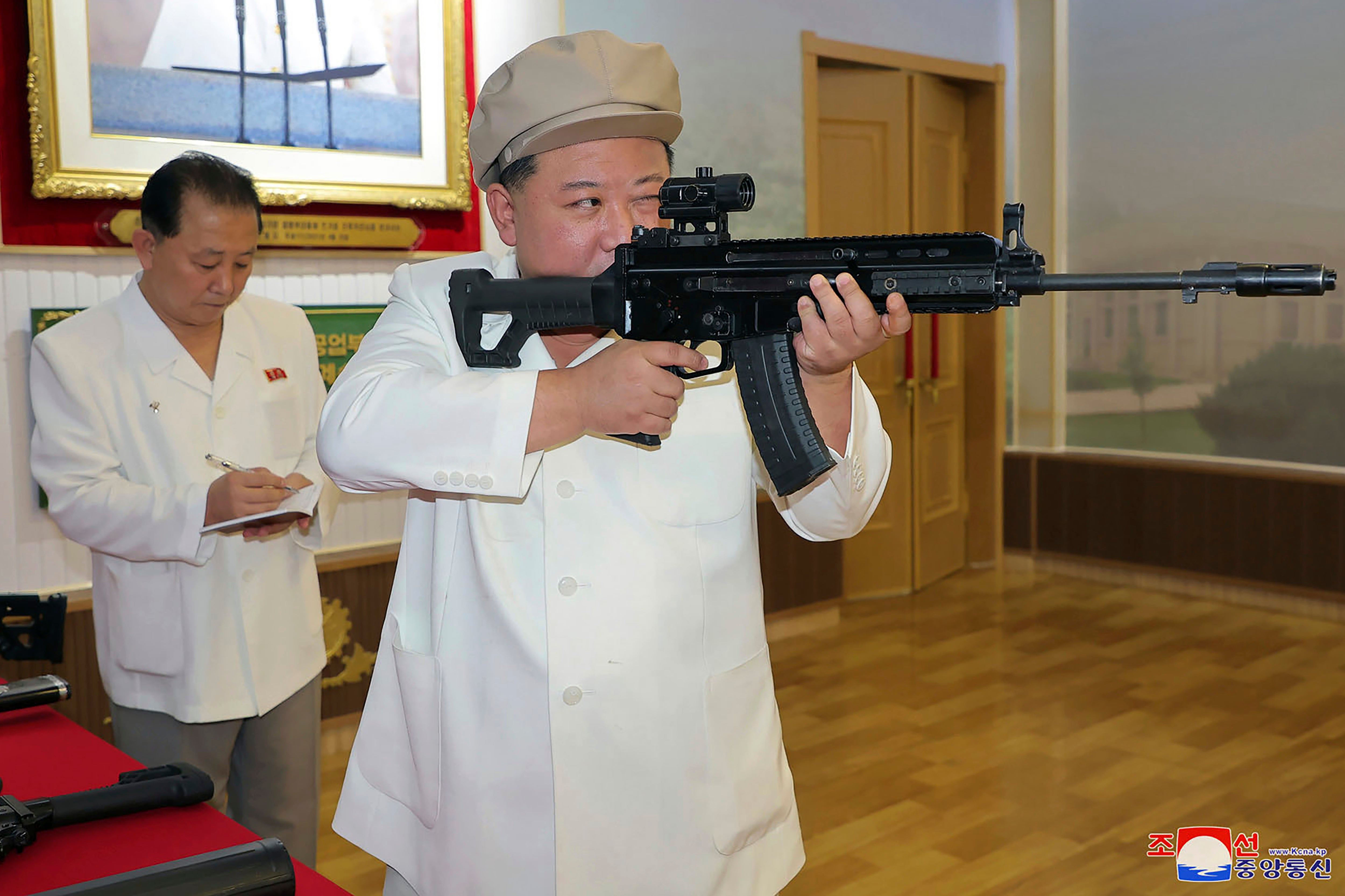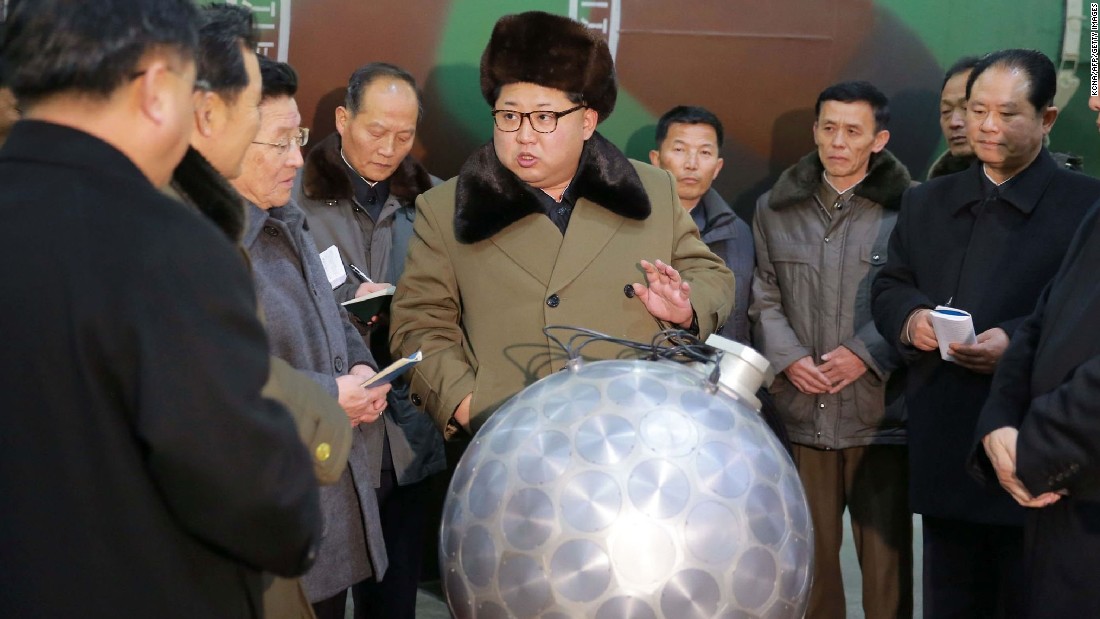Supreme Leader Kim Jong-un Tours North Korea’s Arms Factories, Vows Unwavering War Readiness

Supreme Leader Kim Jong-un Tours North Korea’s Arms Factories, Vows Unwavering War Readiness
In a display of military might and unwavering determination, North Korean leader Kim Jong-un recently toured the country’s arms factories, reaffirming the regime’s commitment to maintaining its war readiness. The visit came amidst ongoing tensions on the Korean peninsula and raised concerns among neighboring nations about the secretive nation’s intentions.
With an air of confidence, Kim Jong-un inspected various defense facilities, including missile production plants and military research centers. The Supreme Leader’s presence at these sites underscored his personal involvement in North Korea’s military affairs and sent a strong message of defiance to the international community.
During his tour, Kim Jong-un addressed the factory workers, praising their dedication and hard work in ensuring the nation’s self-reliance in defense capabilities. He emphasized the importance of producing state-of-the-art weaponry to protect the country’s sovereignty and defend it from perceived threats. The North Korean leader’s speech was laced with rhetoric condemning foreign interference and highlighting the nation’s historical struggles against imperialist powers.

The visit, which was broadcasted on state media, showcased North Korea’s advancement in military technology and showcased a variety of missile systems, including intercontinental ballistic missiles (ICBMs) that have been the subject of international sanctions and scrutiny.
In response to Kim Jong-un’s visit, the United States and its allies expressed deep concern over North Korea’s aggressive posture. They view the regime’s pursuit of advanced missile technologies as a destabilizing force in the region and a direct threat to global security.
The United Nations Security Council convened an emergency meeting to discuss the situation, with members unanimously condemning North Korea’s actions and reaffirming their commitment to enforcing existing sanctions on the country. China, North Korea’s primary economic and political ally, urged restraint and called for dialogue to ease tensions.
However, the North Korean regime has historically been resistant to diplomatic overtures and has often viewed international sanctions as acts of aggression. It perceives its nuclear and missile programs as non-negotiable elements of its national defense strategy and a deterrent against potential invasions.

The recent tour of the arms factories is seen by some experts as a strategic move to display the country’s military capabilities while seeking to strengthen domestic support for the regime. North Korea’s economy has been struggling under the weight of sanctions, natural disasters, and internal challenges, and the regime may be using its military prowess as a rallying point for its citizens.
The secretive nature of the North Korean state makes it challenging to assess the true extent of its military capabilities. Satellite imagery, intelligence reports, and defector testimonies provide glimpses, but the full picture remains elusive. Nonetheless, the country’s progress in missile technology has raised alarms, especially in light of its track record of conducting nuclear and missile tests in defiance of international norms.
The situation on the Korean peninsula has been a long-standing concern for the international community, and diplomatic efforts to denuclearize North Korea have faced numerous hurdles. Past attempts at dialogue, such as the Six-Party Talks involving the United States, China, Russia, Japan, and South Korea, have yielded limited results, with North Korea often withdrawing or conducting provocative actions shortly after negotiations.
The latest developments have reignited debates on how best to approach North Korea diplomatically. Some argue that dialogue, economic incentives, and security guarantees could encourage the regime to gradually denuclearize, while others maintain a more skeptical view, emphasizing the need for increased pressure and stricter enforcement of sanctions.

The situation also poses complex challenges for regional stability. South Korea, a long-time target of North Korea’s threats, continues to prioritize engagement and dialogue, hoping to find peaceful resolutions to the crisis. The South Korean government has expressed its readiness to resume inter-Korean talks and has called for an end to hostilities.
Japan, on the other hand, has been more cautious, viewing North Korea’s actions as direct threats to its national security. The Japanese government has sought assurances from the United States of continued military cooperation and increased intelligence-sharing to counter the North Korean threat.
In response to it’s actions, the United States has maintained a policy of “maximum pressure and engagement.” This approach combines economic sanctions with diplomatic efforts, emphasizing the need to hold North Korea accountable for its actions while keeping communication channels open.
The international community’s response to North Korea’s latest show of military strength will undoubtedly shape the trajectory of future interactions. Finding a delicate balance between applying pressure on the regime and offering incentives for denuclearization remains a complex challenge.
As the situation unfolds, neighboring countries and the global community will closely monitor North Korea’s actions and responses. The potential consequences of any escalation in tensions are vast, underscoring the urgency for diplomatic efforts to avoid a devastating conflict in one of the world’s most volatile regions.
In the midst of geopolitical complexities and military posturing, the fate of the Korean peninsula hinges on the delicate interplay of diplomacy, deterrence, and dialogue. The world watches with bated breath as North Korea’s Supreme Leader, Kim Jong-un, continues to assert the country’s military prowess, leaving many to wonder what lies ahead for the region and the broader world.




